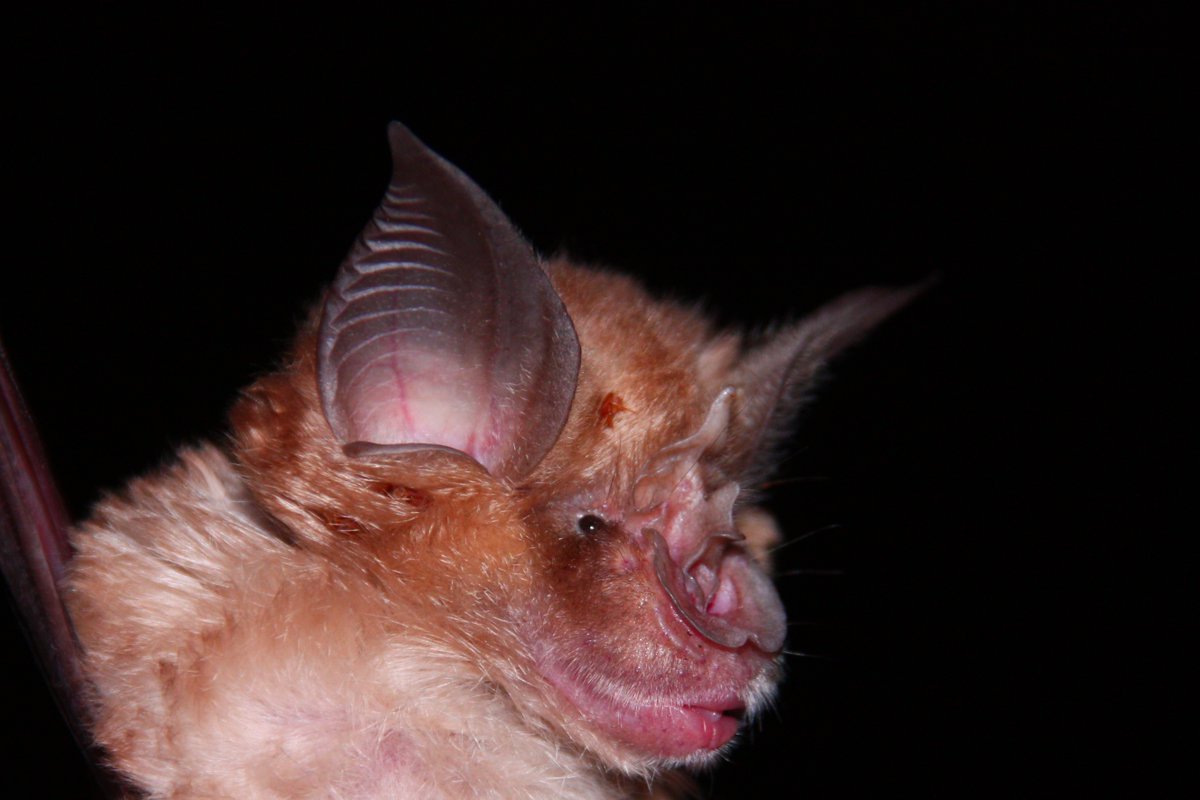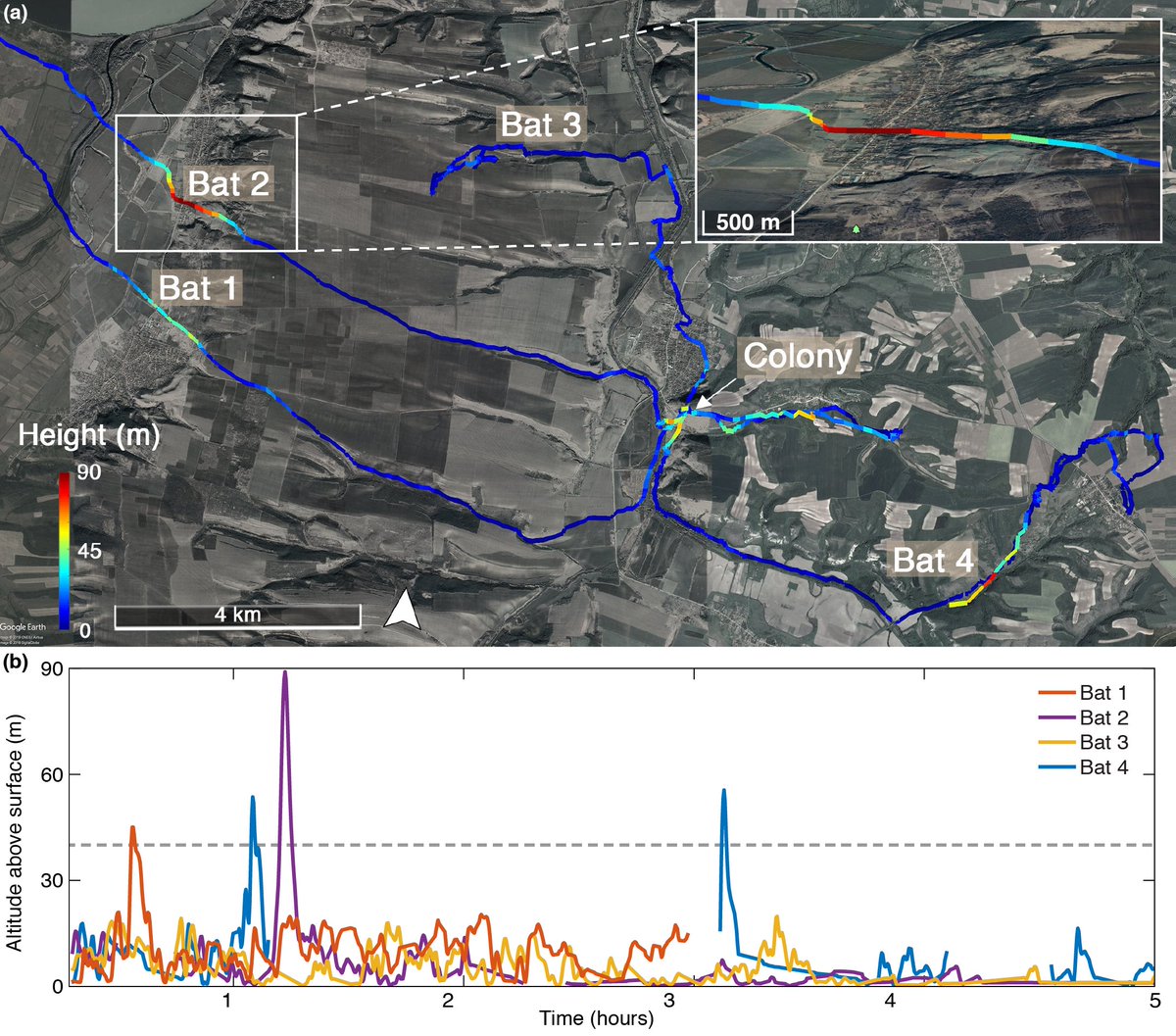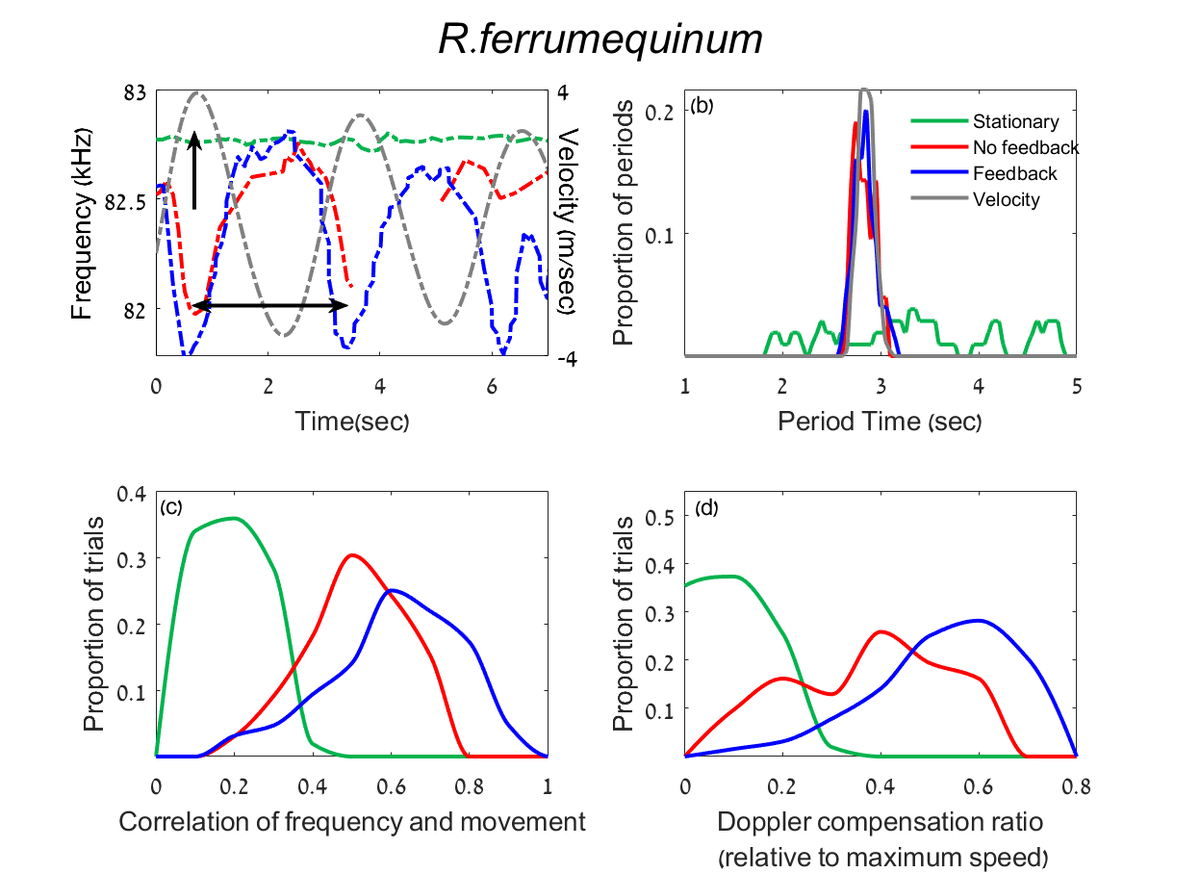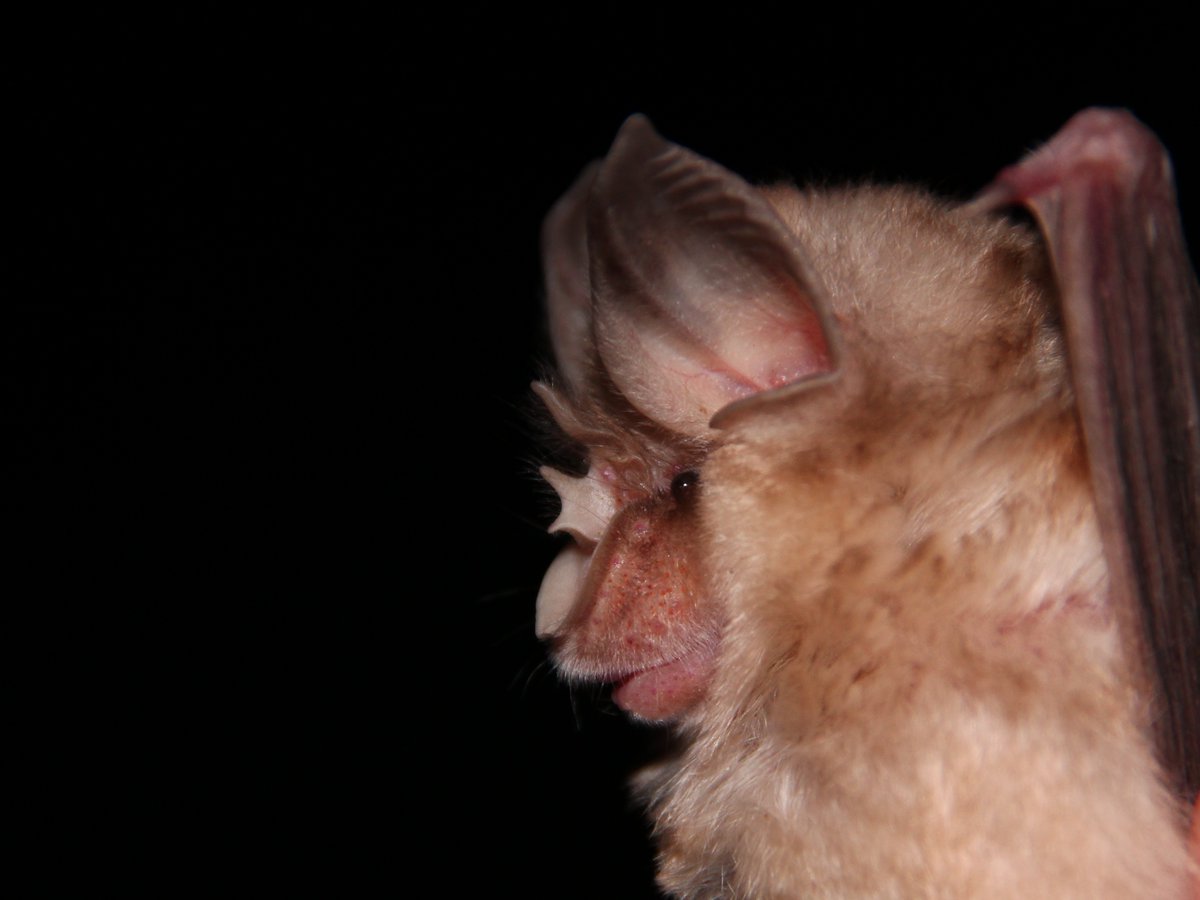We have a new paper out! This one about swinging bats (not this bat). Out today in @BMCBiology, article by Arjan Boonman, Itay Reiger, @greif_stefan, @AyaGoldshtein, @ofrieitan @YovelBatLab, and I: https://bit.ly/3phOTDl
Short
Short

Horseshoe bats and other constant-frequency echolocators are famous for using Doppler shift compensation to keep returning echoes within a narrow band of frequencies in which their hearing is optimal (an acoustic fovea).
This has been shown to rely on the bats detecting the Doppler-shifted frequency of the echoes from an object whose distance from the bat changes. The paradigm uses a bat swinging on a pendulum and recording its echolocation behavior as it nears a wall
BUT, we had GPS data that showed greater horseshoe bats flying too high to receive any echoes! How then can they make sure potential echoes will be detectable to them?
We tweaked the old pendulum paradigm and made sure bats DID NOT receive any echoes, and lo and behold - even with no external cues the bat correctly compensated for movement-related Doppler-shift, lowering their emitted frequencies in step with forward-movement.

 Read on Twitter
Read on Twitter





